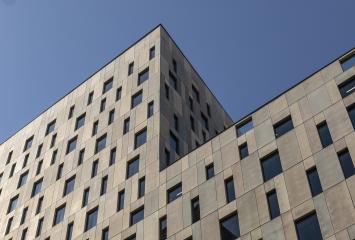Neurological and sensory design: a more humane way to construct office spaces
The human brain, like that of any other animal, presents typical characteristics that differentiate it from the rest: from predominant tendencies to react to environmental stimuli to unconscious biases in information processing or very marked innate desires. In this sense, what neurological design does, a burgeoning design trend, is to apply the scientific understanding of these characteristics to the construction of spaces so that they contribute to the emotional well-being of the people who occupy them. Designing environments optimal for the human mind.
The principles of neurological design
Neuroscience is an emerging science. There is much to be discovered. Nevertheless, at this time, and after decades of research, there are already a series of well-established principles from which neurological designers can work. Like the principle of limited cognitive load. According to this principle, people can only process a specific amount of information in a given period, beyond which they may become overwhelmed. A principle that motivates spaces developed from neurological design to avoid overstimulation of the senses and to be intuitive and not excessively intricate.
And this leads us to another neurological principle: the human brain shows incessant activity in pattern recognition, which is why it feels more relaxed in environments where the visual scene presents traits of grouping, symmetry, and visual hierarchy. People enjoy greater peace when their surroundings are understandable and simple. Disorder and arbitrariness, far from fostering creativity, induce a state of unrest that hinders all cognitive abilities, including innovation. Additionally, this order allows for the utilization of the principle of selective attention to highlight relevant elements.
On the other hand, there are the more emotional principles. The presence of vegetation in the office, for example, usually inspires positive emotions and promotes healthy moods. The same goes for natural lighting, furniture arrangements that favor the flow of free movement, decorations with water features like fountains, visually spacious and relaxed rest areas, or the use of colors that promote concentration such as soft tones or that foster imagination such as vibrant tones. Ultimately, it's about leveraging what we know about the human psyche to create sensitive and pleasant offices.
The rewards for companies
It is evident that a human-centric approach like that exhibited by neurological design is primarily beneficial for people. But also for companies. After all, improving the user experience within the office increases individual performance, which inevitably has a positive effect on the organization. But that's not all: when a worker feels truly comfortable in a space, even if they don't exactly know why, even if it's due to neurological reasons they aren't fully aware of, it's a fantastic mechanism for talent retention. People want to be where they feel good. Where they feel at ease.
This satisfaction also influences the level of commitment the worker has with the company, which once again usually impacts the degree of productivity and the willingness to make occasional sacrifices for the collective. Finally, let's not forget that 2023 closed with a record number of work-related mental health absences. Neurological designs, which reduce stress and job dissatisfaction, can function as a way to prevent psychological disorders in people and to prevent the loss of human resources in companies. There is still much to learn about human psychology, but using what we have learned opens up countless opportunities.

